
Fundamentals
The Hair Follicle Dynamics, at its most elemental, describes the continuous, rhythmic cycle of growth, rest, and renewal that each individual hair strand undergoes within its anchoring structure, the hair follicle. It is a biological ballet, a precise choreography of cellular events dictating how hair emerges from the scalp, flourishes, and eventually releases, making way for new life. This cyclical pattern, often segmented into the anagen (growth), catagen (transition), and telogen (rest) phases, governs not only the length and density of our hair but also its very vitality.
For those new to the complexities of hair science, understanding this fundamental process is akin to learning the heartbeat of your hair. Each follicle, a tiny organ nestled beneath the skin, acts as a miniature factory, diligently producing the keratinized filaments we recognize as hair. The meaning of Hair Follicle Dynamics, then, lies in recognizing this ceaseless activity, a testament to the body’s innate capacity for regeneration. It is a biological rhythm, a silent hum of activity beneath the surface of our skin, perpetually working to maintain the crown we wear.
The Hair Follicle Dynamics are not merely a dry scientific explanation; they represent the living pulse of our hair, a constant renewal that connects us to ancient cycles of nature and life itself.
The inherent qualities of textured hair, with its unique coil patterns and elliptical cross-sections, mean that these dynamics express themselves distinctly. The very structure of a tightly coiled strand, for instance, presents specific considerations for moisture retention and tensile strength, factors intrinsically tied to the health and longevity of its growth cycle. The explanation of Hair Follicle Dynamics, in this context, begins to reveal why certain care practices, passed down through generations, hold such profound significance for Black and mixed-race hair experiences.
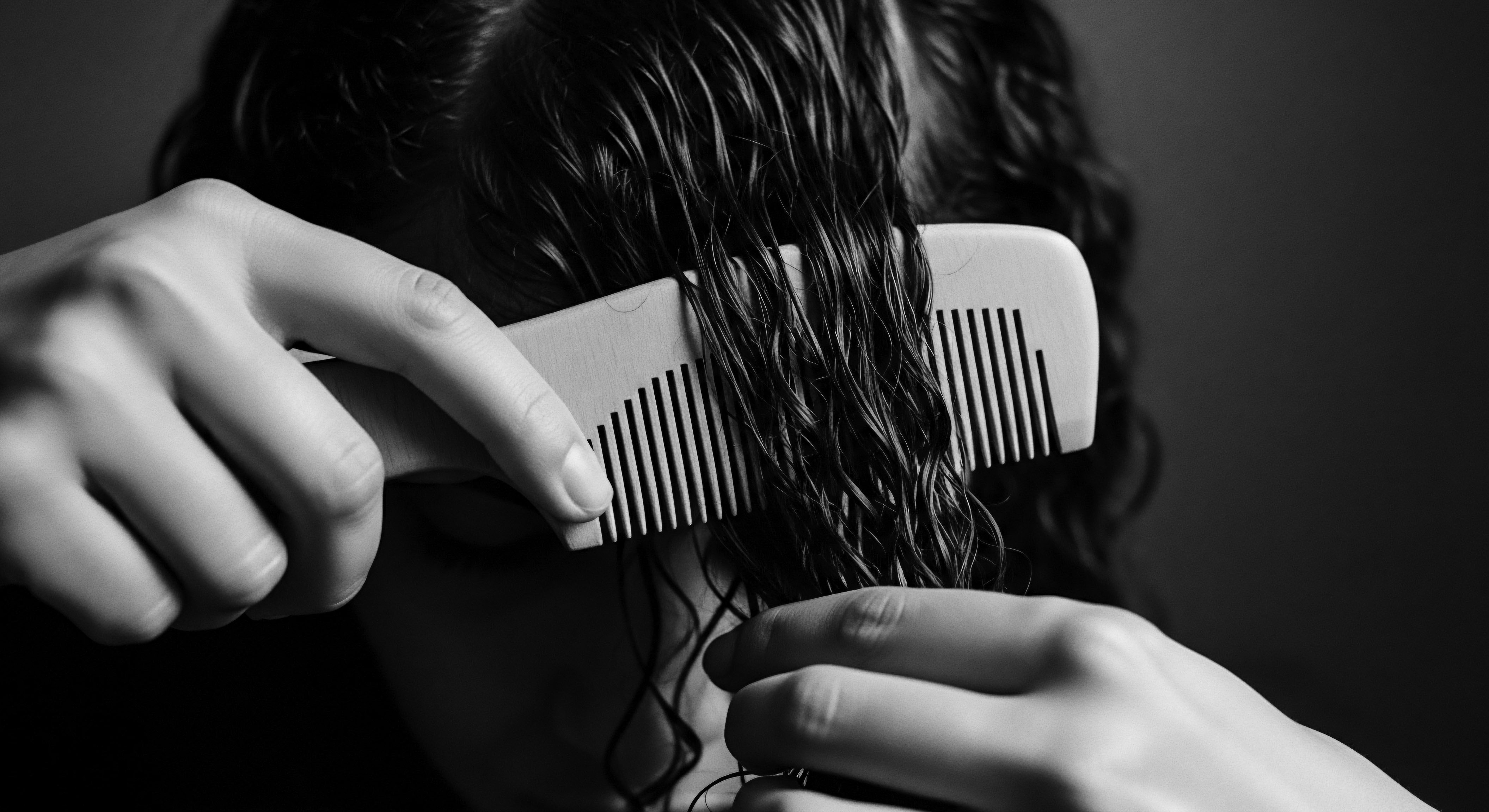
Phases of Follicular Activity
The hair follicle moves through distinct phases, each vital for the overall health and appearance of the hair. Recognizing these phases helps us appreciate the complexity of hair growth and the intentionality behind traditional care practices.
- Anagen Phase ❉ This is the active growth period, where hair cells multiply rapidly within the follicle, pushing the hair shaft outward. For textured hair, this phase can vary in duration, influencing the potential length a strand can achieve.
- Catagen Phase ❉ A brief transitional period, where the hair follicle shrinks, and hair growth ceases. It is a signal of preparation for the next stage.
- Telogen Phase ❉ The resting phase, during which the hair remains in the follicle but is no longer growing. At the conclusion of this period, the old hair is released, making way for a new anagen hair to emerge.
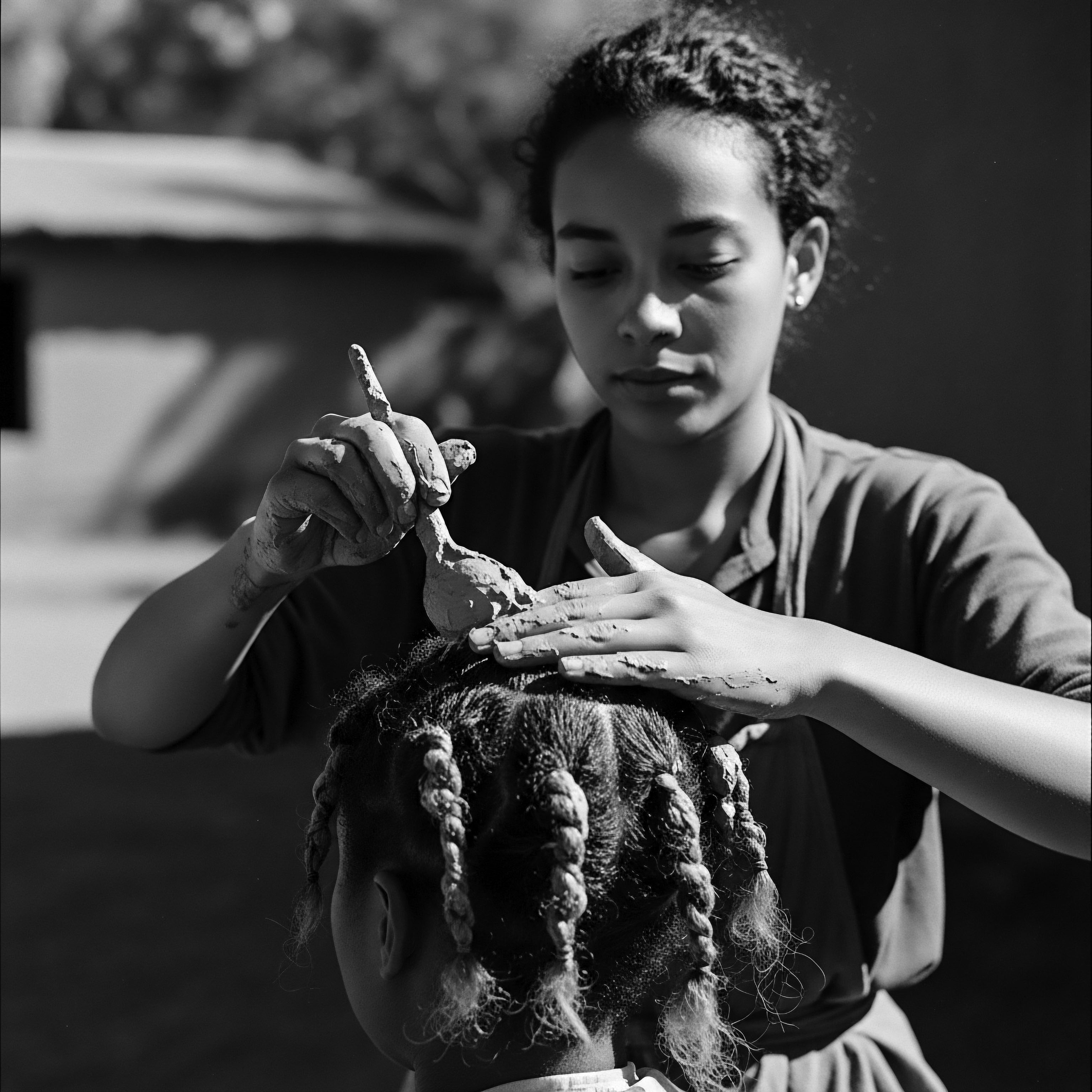
Factors Influencing the Cycle
While the cycle is universal, its precise manifestation can be influenced by a myriad of factors, both internal and external. These elements can either support or challenge the natural rhythm of the hair follicle.
- Genetics ❉ The inherited blueprint plays a substantial role in determining hair texture, density, and the typical duration of each follicular phase. Genetic factors appear to play a major role in determining hair texture—straight, wavy, or curly—and the thickness of individual strands of hair.
- Nutrition ❉ A balanced diet provides the essential building blocks for healthy hair growth, influencing the vigor of the anagen phase.
- Scalp Health ❉ A well-nourished and calm scalp environment is paramount for optimal follicular function. Irritation or inflammation can disrupt the natural cycle.
- Care Practices ❉ The methods we employ to cleanse, moisturize, and style our hair directly impact the follicle’s well-being.
The initial statement of Hair Follicle Dynamics, then, is this ❉ it is the intrinsic biological rhythm of hair growth, a cycle that, while universal, expresses itself with particularity in textured hair, profoundly influenced by our ancestral inheritance and daily rituals of care.
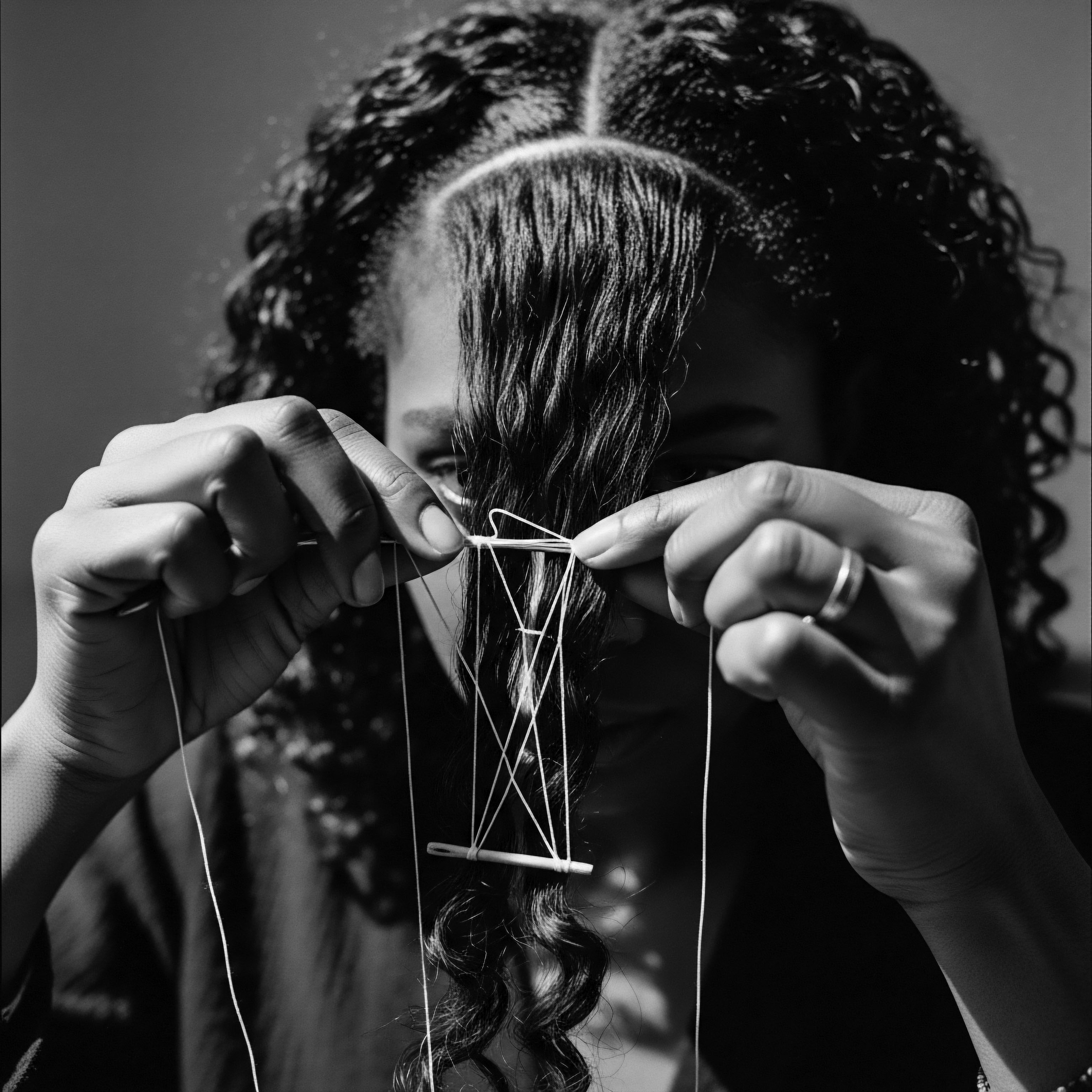
Intermediate
Moving beyond the basic explanation, the Hair Follicle Dynamics represent a deeply interconnected system, a biological testament to resilience and adaptation, particularly salient when considering textured hair. The meaning of these dynamics for Black and mixed-race hair goes beyond mere biology; it intertwines with generations of cultural practices, communal wisdom, and a profound connection to identity. The Hair Follicle Dynamics, in this sense, are not just about cellular division and protein synthesis; they are about the enduring legacy held within each coil and curl.
The elliptical cross-section and unique curvature of textured hair follicles, distinct from those producing straighter strands, mean that the hair shaft itself is predisposed to a certain level of fragility. This structural difference, while contributing to the remarkable beauty and versatility of textured hair, also influences how moisture is retained and how easily mechanical stress can lead to breakage. The Hair Follicle Dynamics, therefore, are experienced differently; the journey from root to tip carries specific considerations for preserving integrity. The hair’s innate spiraled structure and wider follicular pattern, some scholars suggest, might have adapted to provide cool air for the scalp, offering protection against intense solar radiation in ancestral environments.
Understanding the Hair Follicle Dynamics for textured hair demands a recognition of its distinct needs, a truth long understood within ancestral traditions.
This perspective offers a deeper interpretation of the Hair Follicle Dynamics, shifting our focus from a purely biological lens to one that acknowledges the lived experience of hair. It is a clarification of how scientific principles intersect with the tangible realities of daily care and historical practices.
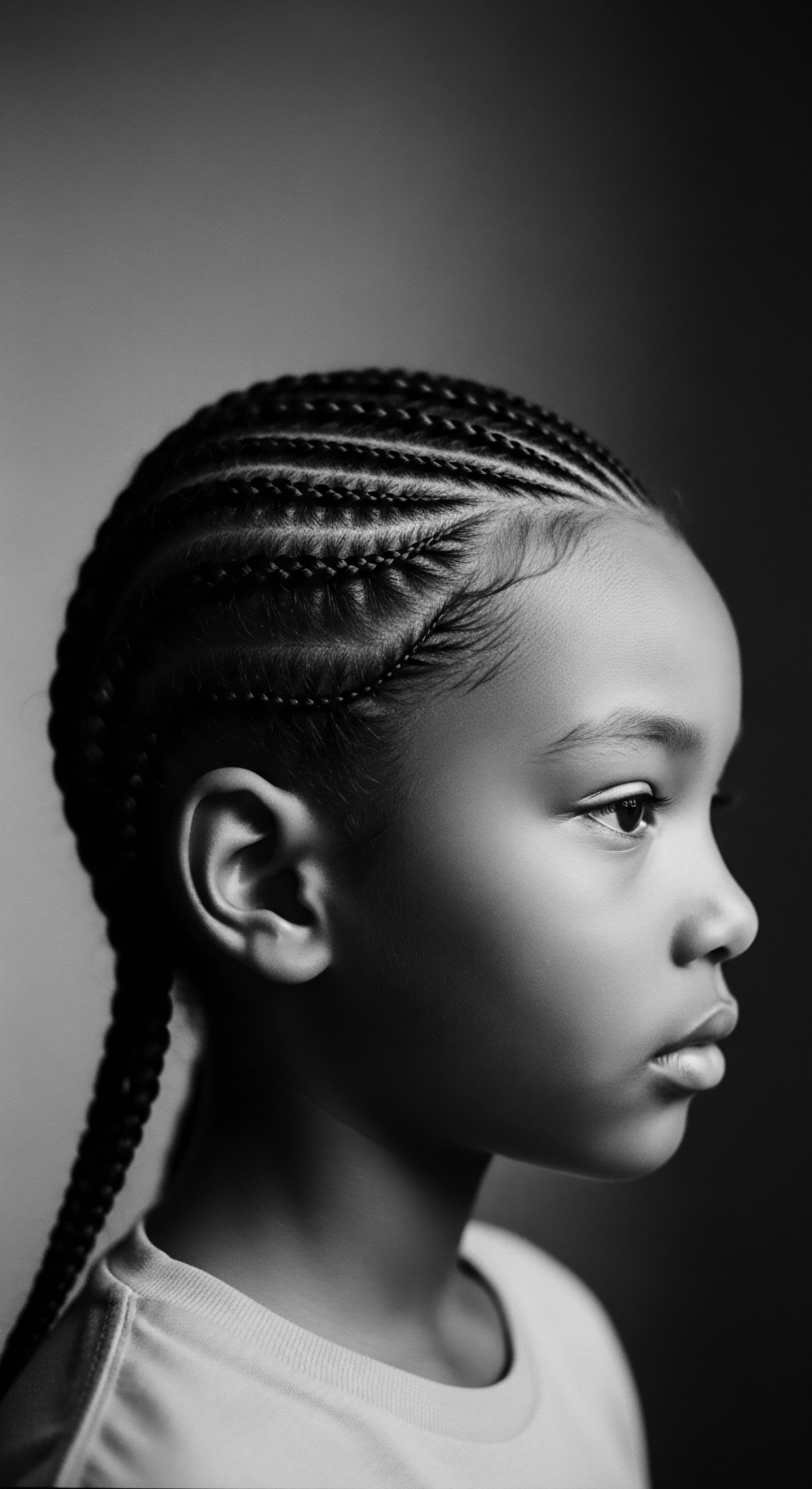
The Ancestral Wisdom of Follicular Care
For centuries, ancestral practices intuitively addressed the unique dynamics of textured hair, often without the lexicon of modern science, yet with profound efficacy. These practices, passed down through the ages, represent an accumulated wisdom concerning the Hair Follicle Dynamics, focusing on nurturing the scalp and preserving the hair shaft.
- Oiling Rituals ❉ The tradition of applying natural oils and butters to the scalp and hair, prevalent across African cultures, speaks directly to the need for moisture retention in textured hair. These practices aimed to seal in hydration, reduce dryness, and protect the delicate hair shaft from environmental stressors. Ancient Egyptians, for instance, anointed their bodies and hair with oils, a practice later adopted across various African societies to maintain healthy hair and scalp.
- Protective Styling ❉ Braids, twists, and other traditional styles, often intricate and time-consuming, served a vital purpose beyond aesthetics. They minimized manipulation, reducing friction and breakage, thereby allowing the hair to retain length and supporting the Hair Follicle Dynamics through prolonged anagen phases.
- Herbal Infusions ❉ The use of specific botanicals, whether for cleansing, conditioning, or scalp treatments, reflects a deep understanding of their properties to soothe, strengthen, and stimulate the follicle. Ethnobotanical studies reveal a wealth of plants used for hair and skin care in various African communities, addressing concerns from baldness to dandruff.
These historical practices offer a rich context for the contemporary understanding of Hair Follicle Dynamics, demonstrating how traditional wisdom often aligns with scientific principles, even if articulated differently.
| Traditional Practice (Heritage Root) Scalp Massages with Oils (e.g. Shea Butter, Coconut Oil) |
| Contemporary Scientific Link to Hair Follicle Dynamics Promotes blood circulation to the follicle, delivering nutrients and supporting healthy growth; oils provide a barrier against moisture loss. |
| Traditional Practice (Heritage Root) Protective Hairstyles (e.g. Braids, Twists, Locs) |
| Contemporary Scientific Link to Hair Follicle Dynamics Minimizes mechanical stress on the hair shaft and follicle, reducing breakage and allowing for extended anagen (growth) phases. |
| Traditional Practice (Heritage Root) Herbal Rinses and Masks (e.g. Aloe Vera, Hibiscus) |
| Contemporary Scientific Link to Hair Follicle Dynamics Offers anti-inflammatory and conditioning properties, calming the scalp environment and supporting optimal follicular function. |
| Traditional Practice (Heritage Root) Gentle Detangling (e.g. wide-tooth combs, finger-combing) |
| Contemporary Scientific Link to Hair Follicle Dynamics Prevents undue tension and breakage at the hair shaft, preserving the integrity of the hair as it emerges from the follicle. |
| Traditional Practice (Heritage Root) These methods, though separated by time, share a common purpose ❉ to honor and support the inherent life cycle of the hair follicle. |
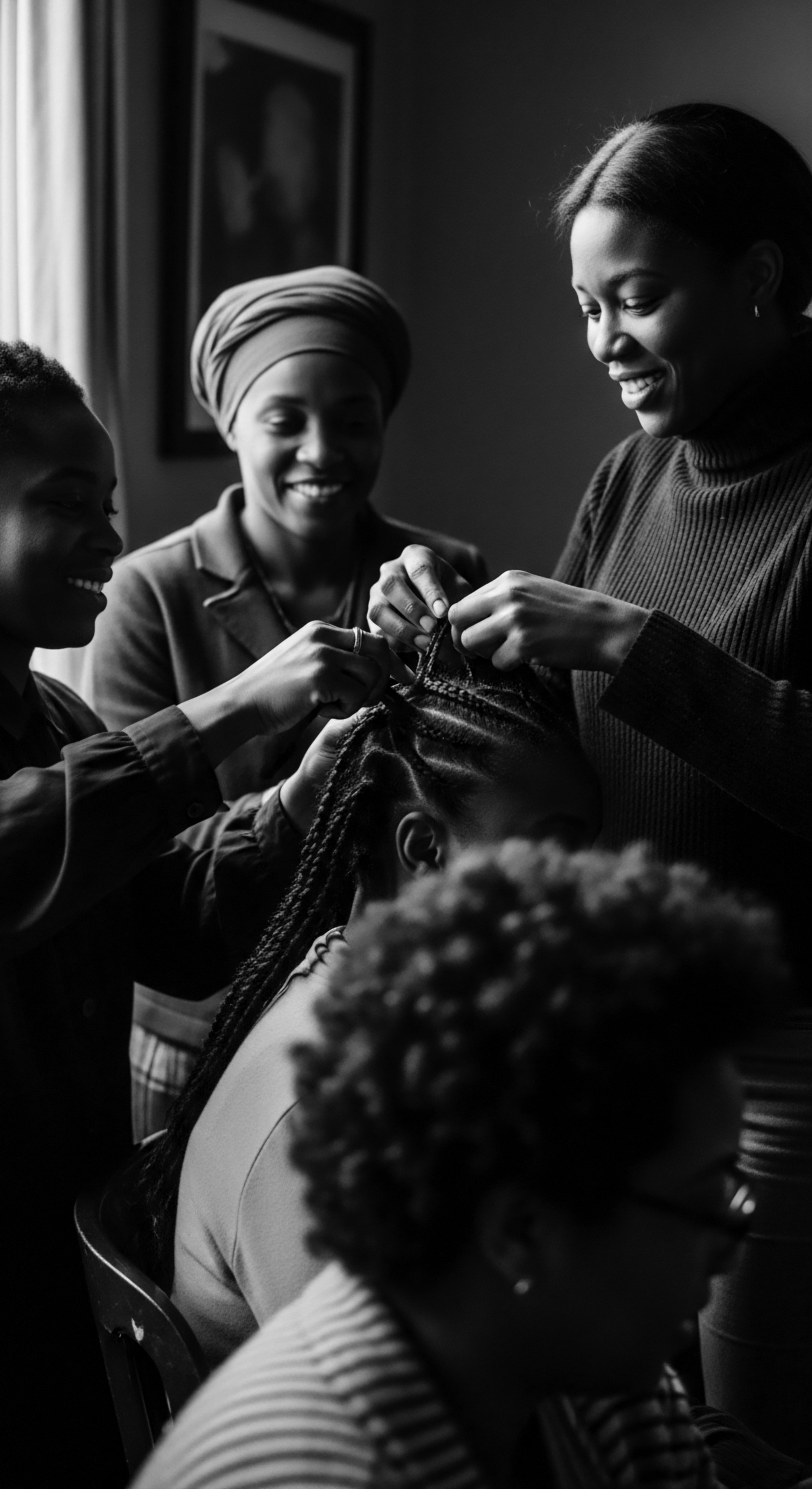
The Impact of Historical Hair Practices
The journey of textured hair through history, particularly in the diaspora, reveals how external pressures and imposed beauty standards have often challenged the natural Hair Follicle Dynamics. The historical context of chemical straightening, for instance, illustrates a profound disruption. Introduced and widely adopted, relaxers chemically alter the disulfide bonds within the hair shaft, effectively straightening the natural curl.
While offering a perceived ease of styling and conformity to Eurocentric beauty ideals, this process often came at a cost to follicular health. The application of caustic chemicals, especially when not performed with utmost care, could lead to irritation and damage to the scalp, impacting the delicate environment of the hair follicle itself.
This historical imposition, a stark contrast to ancestral practices that celebrated and preserved natural texture, offers a poignant insight into the Hair Follicle Dynamics. It underscores how societal forces can influence not only styling choices but also the very health and integrity of the hair follicle over generations. The collective experience of Black women, navigating these choices, reveals a deep connection between Hair Follicle Dynamics and cultural resilience.

Academic
The Hair Follicle Dynamics, from an academic vantage point, signifies the complex, genetically orchestrated ballet of cellular proliferation, differentiation, and programmed regression that governs the life cycle of each hair shaft. It is a precise biological mechanism, involving intricate signaling pathways and the coordinated expression of numerous genes, which collectively determine the characteristics of the hair that emerges from the dermal papilla. The interpretation of Hair Follicle Dynamics extends to understanding how this fundamental biological process is profoundly influenced by genetic predisposition, environmental stressors, and, significantly, by the unique morphological and physiological attributes of textured hair, particularly within populations of African descent.
This academic lens requires a comprehensive examination of the molecular and cellular events underpinning the anagen, catagen, and telogen phases, and how disruptions to this delicate equilibrium can manifest in various forms of alopecia, with particular attention to conditions disproportionately affecting textured hair. The delineation of Hair Follicle Dynamics at this level demands an appreciation for the interplay between intrinsic genetic programming and extrinsic factors, including historical hair care practices and their long-term consequences on follicular integrity.
The Hair Follicle Dynamics represent a sophisticated biological system, uniquely expressed and historically impacted within the context of textured hair.
The significance of Hair Follicle Dynamics for textured hair lies in the distinct architecture of its follicle, which is typically elliptical and exhibits a retro-curvature at the hair bulb, resulting in the characteristic S-shaped hair follicle. This structural peculiarity, while contributing to the remarkable curl and density of Afro-textured hair, also presents specific biomechanical challenges. The hair shaft, emerging from such a curved follicle, experiences greater torsional stress, making it inherently more susceptible to breakage along its points of curvature.
This heightened fragility, coupled with a reduced capacity for sebum distribution along the tightly coiled strand, contributes to the propensity for dryness often observed in textured hair. Consequently, the optimal functioning of Hair Follicle Dynamics in textured hair necessitates particular consideration for hydration and minimizing mechanical tension, aspects often addressed by ancestral care rituals.
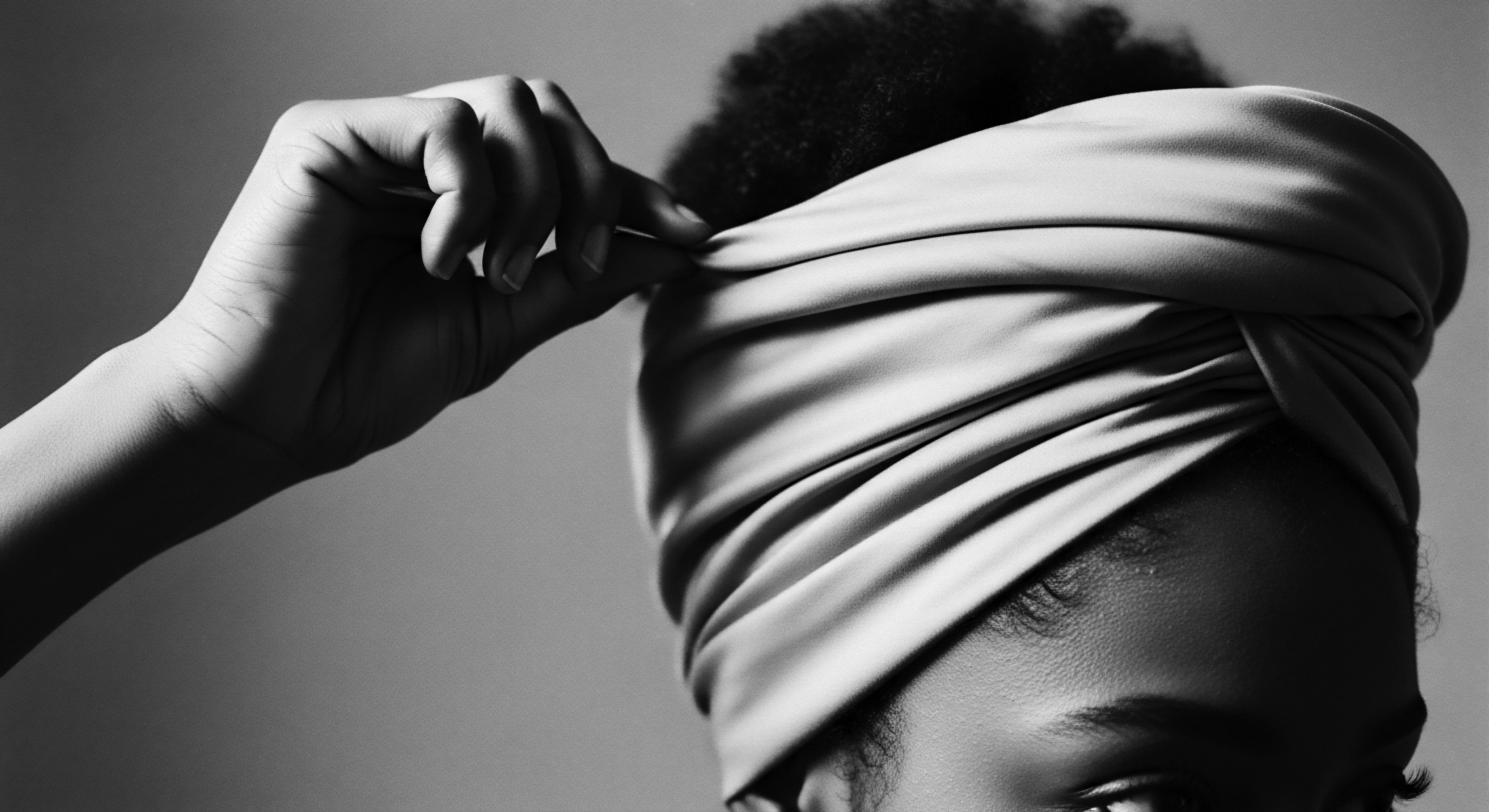
Genomic Underpinnings and Follicular Vulnerability
Recent research has begun to unravel the intricate genomic variations that influence hair texture and, by extension, the Hair Follicle Dynamics. While genetic factors play a major role in determining hair texture, studies suggest that different genes influence hair texture and thickness across various ethnic backgrounds. For individuals of African descent, this genetic blueprint, while producing hair of immense beauty and versatility, can also predispose certain follicles to specific vulnerabilities under environmental stress. A notable example is Central Centrifugal Cicatricial Alopecia (CCCA), a form of scarring alopecia predominantly observed in women of African descent.
CCCA, characterized by permanent hair loss that typically begins at the vertex or mid-scalp and expands centrifugally, is a condition where the hair follicles are progressively destroyed and replaced by scar tissue. While the exact etiology of CCCA is considered multifactorial, with a suggested genetic component linked to mutations in the PADI3 gene, which encodes an enzyme essential for hair shaft formation, historical hair care practices have long been implicated as exacerbating factors. These practices, such as the use of hot combs, chemical relaxers, and tight hairstyles, while not consistently proven as the sole cause, can induce chronic inflammation around the hair follicles, thereby contributing to their damage and eventual destruction.
The prevalence of CCCA among women of African descent is a stark illustration of how the interplay between genetic predispositions and historically prevalent hair care practices can profoundly impact Hair Follicle Dynamics. Khumalo reported a prevalence of 1.2% for women younger than 50 years and 6.7% in women older than 50 years in those of African descent. This statistic underscores the critical need for a culturally informed understanding of hair health and disease, moving beyond a simplistic attribution of cause to acknowledge the complex historical and biological realities.
The progression of CCCA often involves symptoms such as itching, pain, tenderness, or a burning sensation of the scalp, which may precede noticeable hair loss. Early recognition and intervention are crucial to prevent further progression and irreversible damage to the follicles.
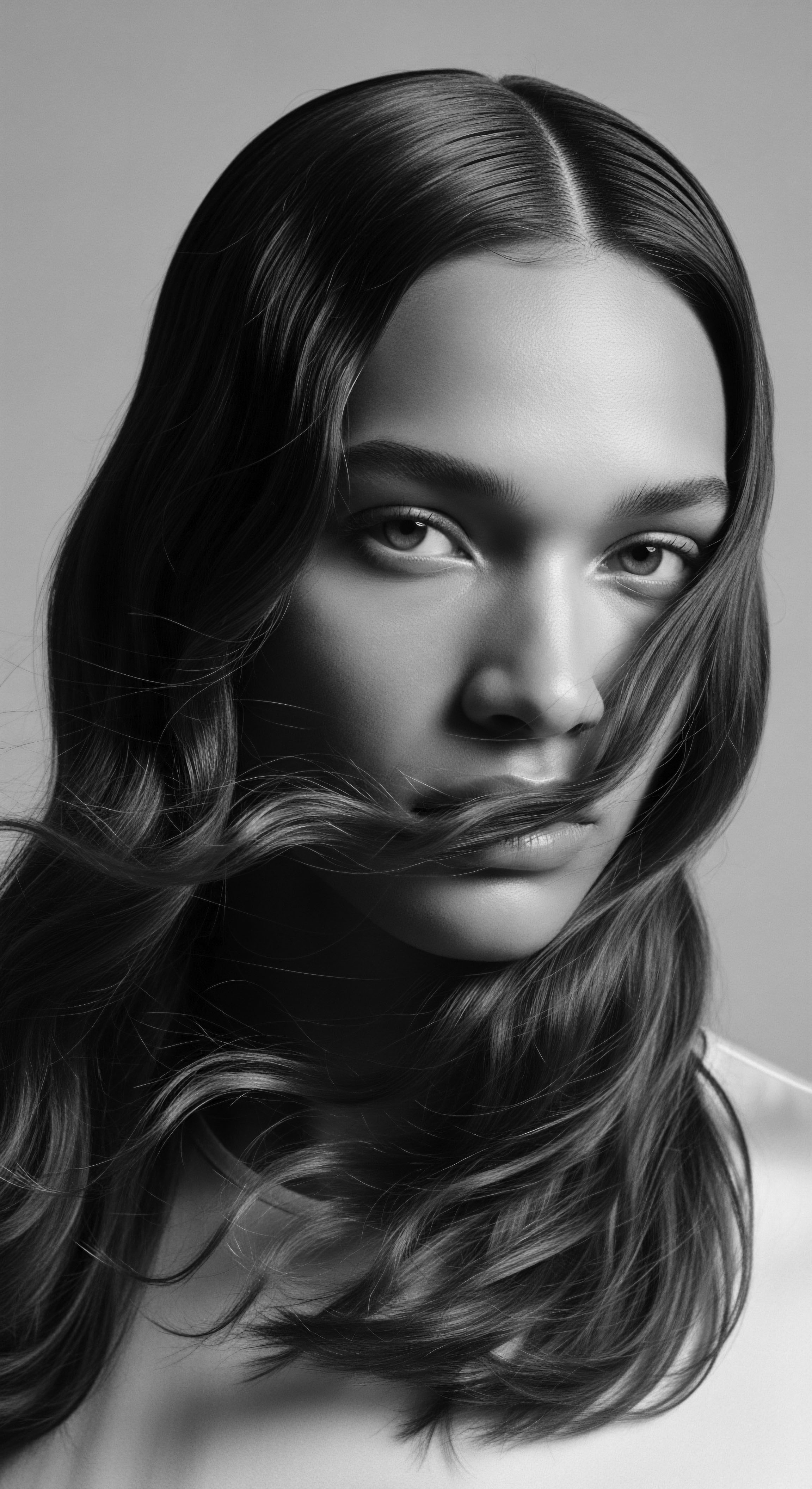
Interconnected Incidences and Long-Term Consequences
The academic examination of Hair Follicle Dynamics in textured hair extends to the long-term consequences of historical and ongoing hair care practices, particularly the impact of chemical treatments and tension-inducing styles. The consistent application of chemical relaxers, while achieving desired aesthetic outcomes, can lead to hair damage and scalp irritation, potentially influencing the follicular environment over time. Similarly, certain high-tension hairstyles, such as tight extensions, weaves, and braids, have been statistically correlated with traction alopecia, a form of hair loss resulting from prolonged pulling on the hair shaft, which can, in turn, contribute to scarring alopecias like CCCA.
This perspective reveals a profound interconnectedness between Hair Follicle Dynamics, cultural expression, and public health. The push towards natural hair, a movement deeply rooted in identity and self-acceptance, can be viewed as a re-alignment with the intrinsic Hair Follicle Dynamics of textured hair, seeking to minimize practices that historically caused follicular stress. This shift not only celebrates ancestral aesthetics but also promotes follicular health, demonstrating how cultural reclamation can directly influence biological well-being.
The Hair Follicle Dynamics are a testament to the adaptive capacity of human biology, yet also a reminder of the historical pressures that have shaped hair care traditions.
Understanding the full complexity of Hair Follicle Dynamics in textured hair requires a multi-disciplinary approach, integrating dermatological science with historical inquiry, ethnobotany, and cultural studies. It is not merely about identifying pathologies but about appreciating the inherent resilience of textured hair and advocating for practices that honor its unique biological and cultural heritage. The continuous exploration of this field will undoubtedly offer deeper insights into the mechanisms of hair growth and loss, particularly as it pertains to diverse hair types, leading to more targeted and culturally sensitive care strategies.
The understanding of Hair Follicle Dynamics, particularly in the context of textured hair, is a journey of continuous discovery, connecting ancient wisdom with modern scientific inquiry.
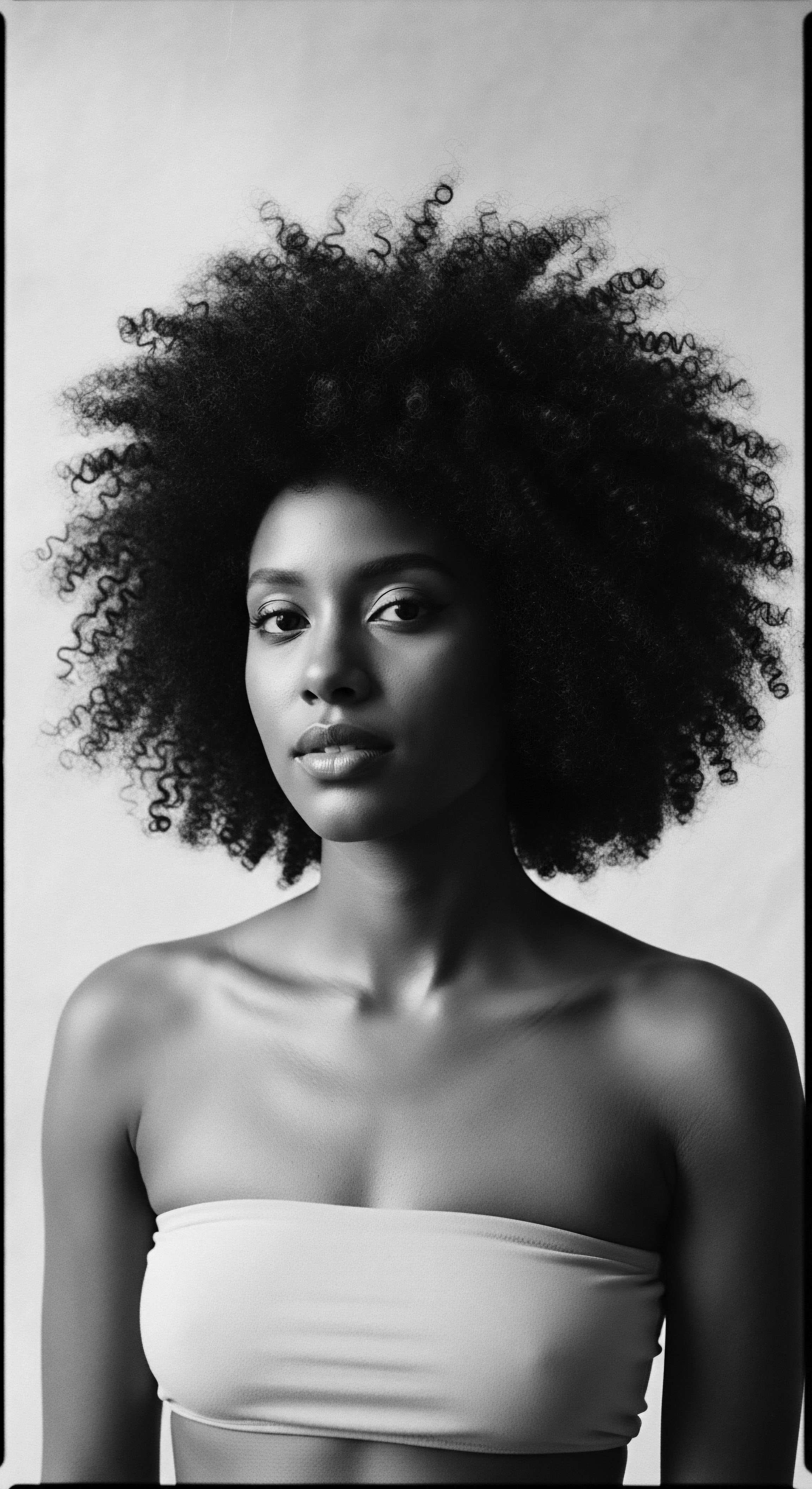
Reflection on the Heritage of Hair Follicle Dynamics
The journey through the Hair Follicle Dynamics, particularly when viewed through the lens of textured hair heritage, is a profound meditation on the enduring spirit of a strand. It reveals not just the biological marvel of hair growth but also the deep cultural roots that nourish its story. From the ancient practices of oiling and intricate braiding, acts of care passed down through matriarchal lines, to the modern understanding of follicular health, we witness a continuous thread of wisdom. The Hair Follicle Dynamics, in this sense, become a living archive, holding the echoes of ancestral hands tending to coils, the resilience forged in the face of imposed beauty standards, and the quiet triumph of self-acceptance.
Each hair, springing from its follicle, carries within it not just keratin and pigment, but the legacy of generations, a vibrant declaration of identity and a testament to the unbroken lineage of textured beauty. This deep connection to our hair’s ancestral story allows us to appreciate its inherent strength and beauty, moving beyond superficial concerns to a place of genuine reverence and holistic care.
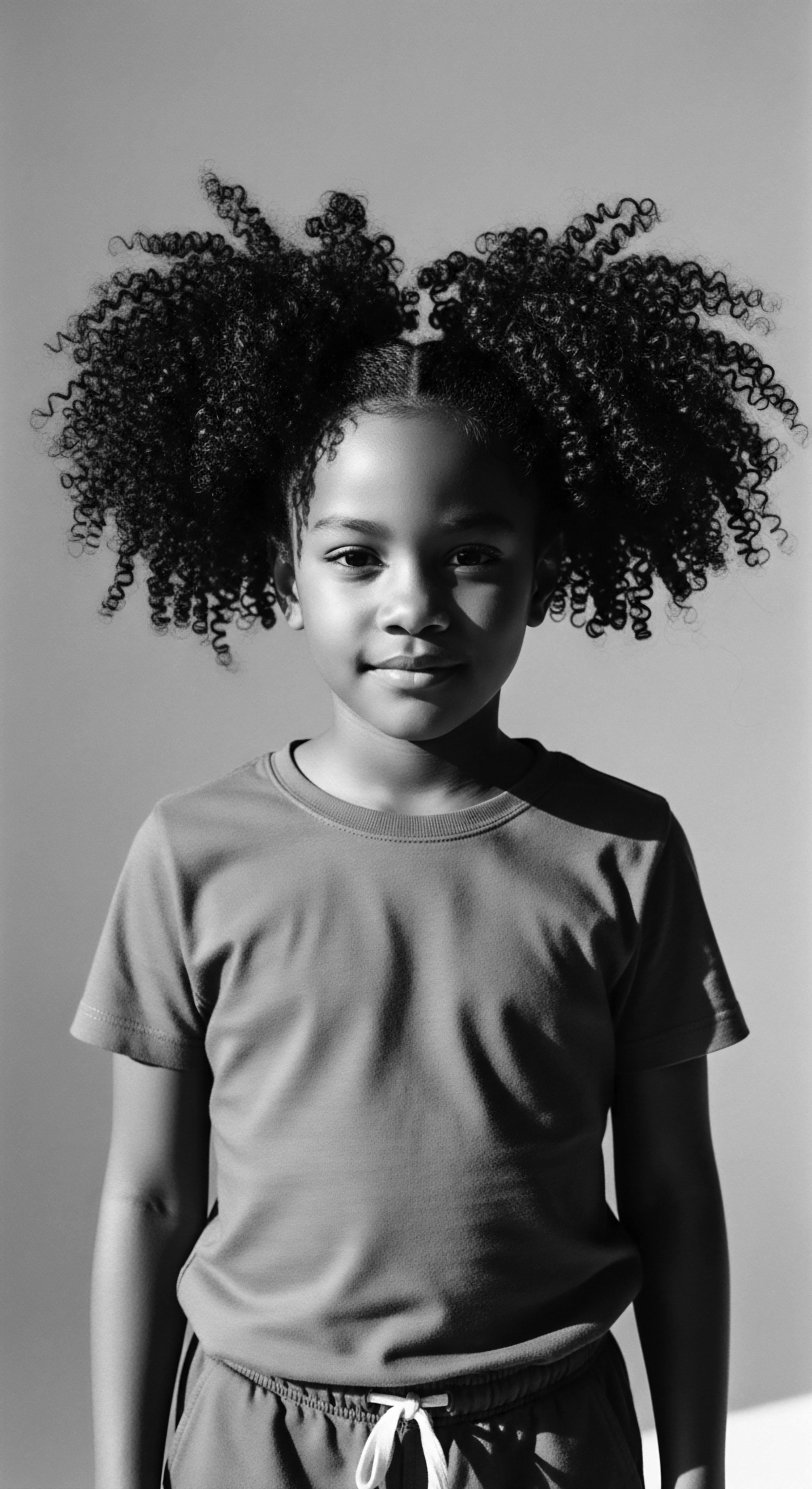
References
- LoPresti, P. Papa, C. M. & Kligman, A. M. (1968). Hot comb alopecia. Archives of Dermatology, 98(3), 234-238.
- Sperling, L. C. & Sau, P. (1992). The histopathology of hot comb alopecia. Journal of the American Academy of Dermatology, 26(6), 903-908.
- Gathers, R. C. & Lim, H. W. (2009). Central centrifugal cicatricial alopecia ❉ past, present, and future. Journal of the American Academy of Dermatology, 60(4), 660-668.
- Herskovitz, I. & Miteva, M. (2016). Central centrifugal cicatricial alopecia ❉ Challenges and solutions. Clinical, Cosmetic and Investigational Dermatology, 9, 175–181.
- Okereke, U. R. Simmons, A. & Taylor, S. C. (2019). Current and emerging treatment strategies for hair loss in women of color. International Journal of Women’s Dermatology, 5(1), 37-45.
- Roche, F. C. Harris, J. & Aguh, C. (2021). Association of type 2 diabetes with central centrifugal cicatricial alopecia ❉ A follow-up study. Journal of the American Academy of Dermatology, 84(3), 819-820.
- Araoye, E. F. Thomas, J. A. L. & Aguh, C. (2020). Hair regrowth in 2 patients with recalcitrant central centrifugal cicatricial alopecia after use of topical metformin. JAAD Case Reports, 6(2), 106-108.
- Khumalo, N. P. (2007). Central centrifugal cicatricial alopecia ❉ The role of hair care practices. Dermatologic Clinics, 25(3), 407-414.
- Lasisi, T. (2021). The evolution of human hair diversity. University of Michigan.
- Jablonski, N. G. (2025). Skin ❉ A natural history. University of California Press.
- Khumalo, N. P. & Ngwanya, M. A. (2012). Central centrifugal cicatricial alopecia ❉ a review. International Journal of Dermatology, 51(2), 133-138.
- McMichael, A. J. & Williams, L. A. (2010). Hair and scalp diseases in children and adolescents. Springer.
- Oyelakin, O. J. & Olatunji, S. A. (2019). Cosmetic Ethnobotany Used by Tribal Women in Epe Communities of Lagos State, Nigeria. Juniper Online Journal of Dermatology and Cosmetology, 1(1), 555556.
- Adinew, B. & Geta, M. (2024). Plants used for hair and skin health care by local communities of Afar, Northeastern Ethiopia. Ethnobotany Research and Applications, 29, 1-13.
- Abubakar, S. K. & Garba, M. A. (2023). Cosmetopoeia of African Plants in Hair Treatment and Care ❉ Topical Nutrition and the Antidiabetic Connection? Diversity, 16(2), 96.
